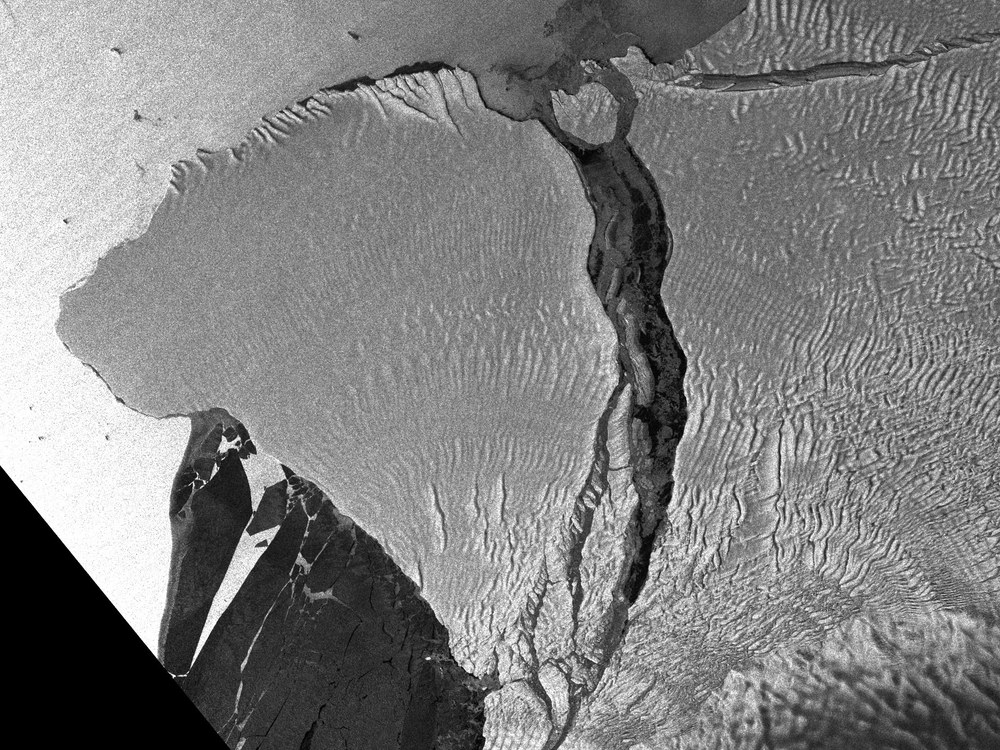Iceberg the size of Greater London
An iceberg the size of Greater London (ca. 1500 km²) has calved from the Brunt ice shelf in Antarctica’s Weddell Sea. The break was anticipated; the evolution of the associated crack structures has been monitored for many years with the help of radar satellites. Already in 2016/2017 the British Antarctic Survey’s Halley Research Station was moved from the location of the new iceberg to a site further inland on the ice shelf.
Fig. 1: Animation of Sentinel-1A recordings from January 2017 to January 2023. Copernicus Sentinel data © ESA 2023.
The rift known as “Chasm 1”, running south to north, as well as the west to east running “Halloween Crack” are examples of the ice shelf’s high dynamics at the edge of the Antarctic continent. Data from ESA‘s Sentinel-1 radar mission show the temporal dynamics of the past five years. Independent of weather and light conditions, these and other radar satellites continuously provide information about the condition of Antarctic ice shelves, making a large contribution to research on polar regions. Germany’s TerraSAR-X radar satellite is also being used to monitor the Brunt Ice Shelf. Almost two years ago, TerraSAR-X documented the calving there of Iceberg A74. The research vessel Polarstern was present at the site in order to study the ocean floor that had become exposed. The radar images also served as navigation aids, since they make possible a detailed and timely look at the ice situation over many kilometres, in contrast to what is possible with a ship radar.
TerraSAR-X has been providing high resolution recordings of the “McDonald Ice Rumples” on the Brunt Ice Shelf every eleven days since 2018. In this area the ice was still in contact with the ocean floor. Since these so-called “pinning points” significantly influence the flow behaviour and the way the ice shelf changes they are of particular interest to scientists. The radar images are being analysed in collaboration with the British Antarctic Survey. It is not yet evident how the current calving event will affect the flow dynamics of the ice shelf over the coming weeks and months at this neuralgic location. It is however clear that despite the rapid changes at other Antarctic locations that rightly give rise to concern, the calving of this new iceberg should not be directly associated with climate change. Calving also of this magnitude is part of the natural dynamics of the Antarctic ice shelves.


